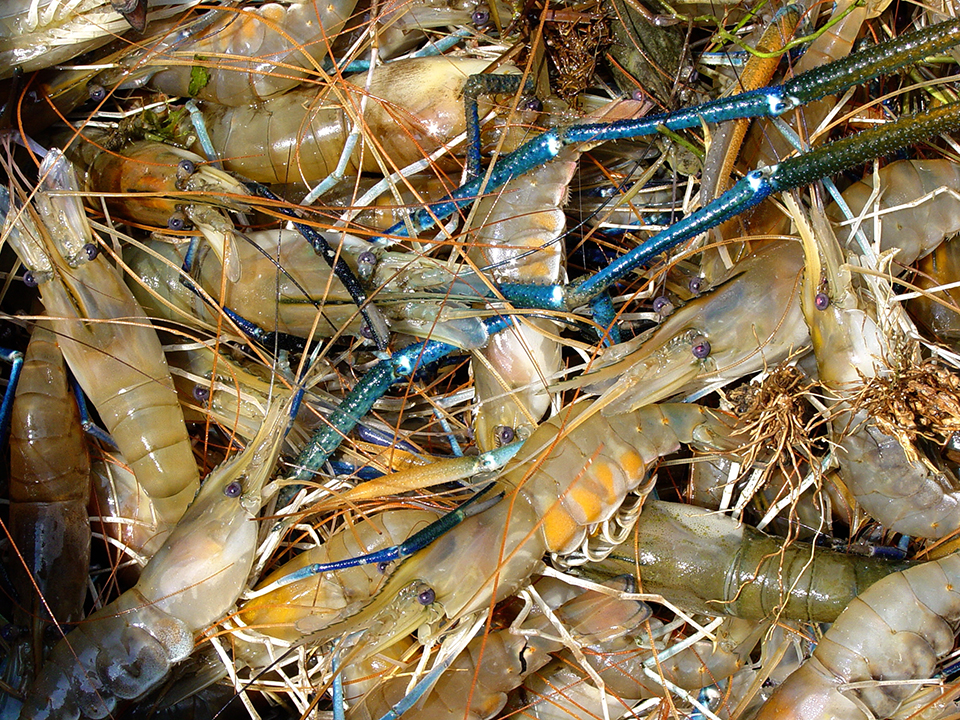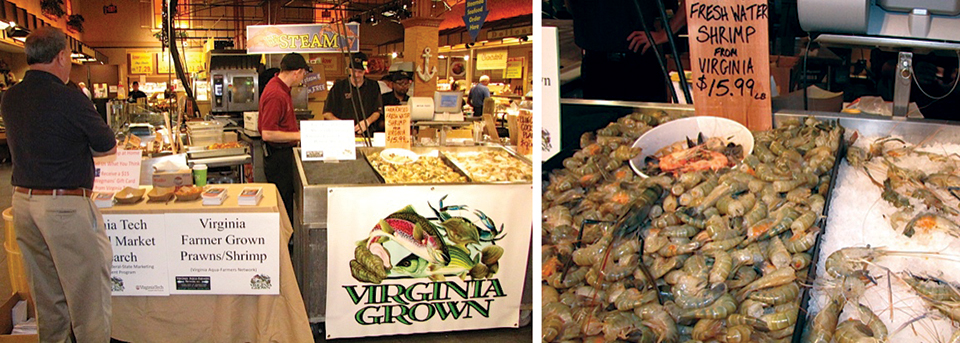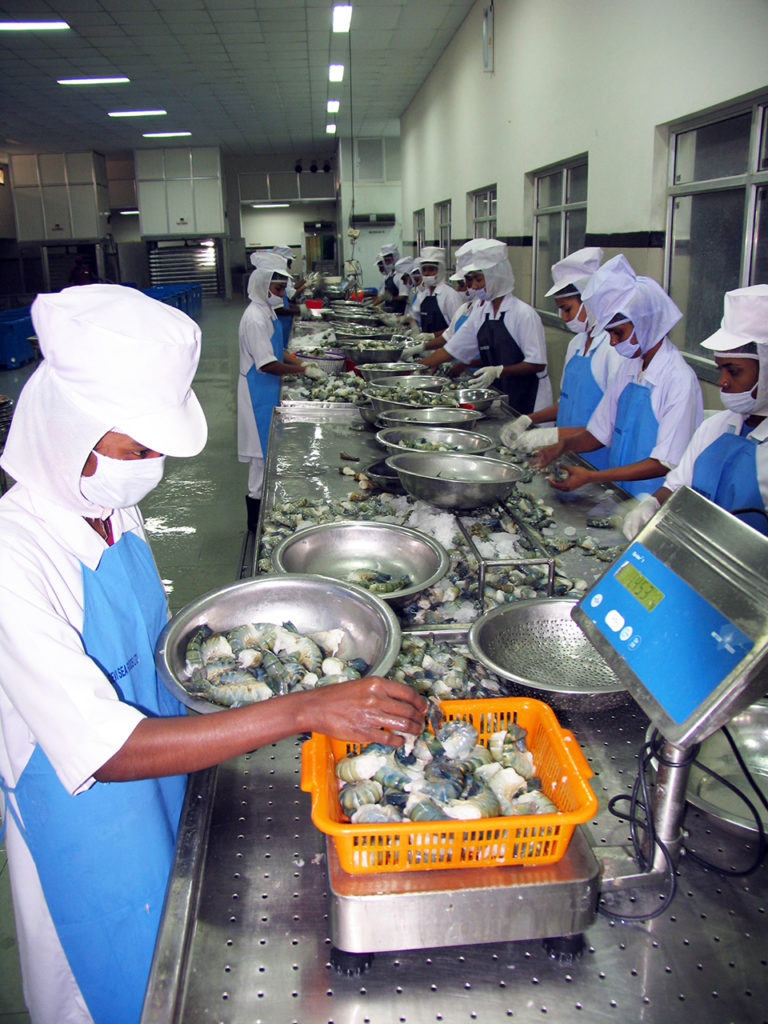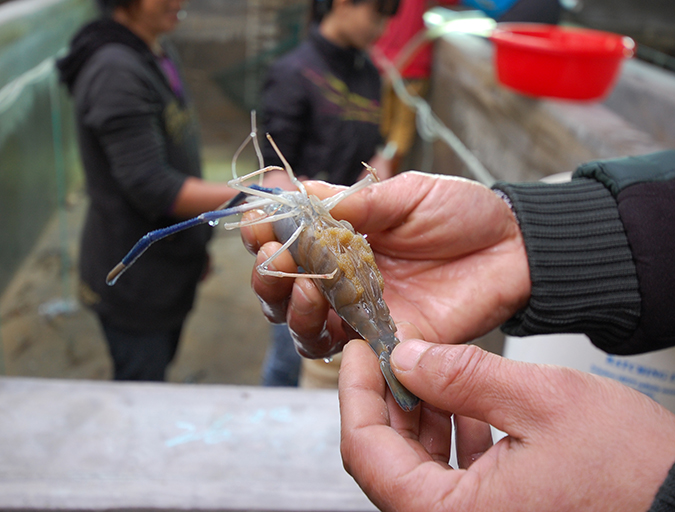Shelf life

Giant freshwater prawns (Macrobrachium rosenbergii) are grown in many countries where moderate environmental conditions provide year-round culture opportunities. The rapid growth of the shrimp also makes them an ideal species for aquaculture. Since shrimp is one of the top aquatic species preferred by consumers worldwide, even a freshwater variety is assured to find high rates of acceptability in the marketplace.
M. rosenbergii are grown and marketed over a relatively short season in many geographic locations in order to maximize animal growth and prevent death from low water temperatures. The quality, safety and composition of the shrimp depend upon many environmental, genetic and aquaculture management factors. The variability of these factors has resulted in conflicting reports in technical and scientific literature.
Ice storage
Reports from the state of Hawaii, USA, indicated the shrimp could be maintained for only three days under ice-chilled conditions. After that period, the cooked abdominal tissue became mushy and broke apart easily, which may be due to the effect of a collagenolytic enzyme acting on the shrimp tissue during ice or refrigerator storage. Also, tail muscle adhesion to the shell increased with storage time and resulted in a product that was unattractive to consumers.
A subsequent study demonstrated that the shrimp’s mushiness developed primarily in the segments closest to the cephalothorax, leading to the assumption that bacteria were not responsible for the onset of mushiness. A biochemical study detected no endogenous proteolytic enzyme activity in the shrimp tail muscle during storage.
A study where proteolytic strains of Flavobacterium and Pseudomonas were inoculated into sterile tail muscle failed to produce mushiness. These studies indicated that texture loss results primarily from endogenous, rather than exogenous, spoilage. This differs from the primary causes of spoilage in many fish and shellfish species, which are mainly exogenous.
A study of headed and whole shrimp stored on ice for 10 days showed that myofibrillar proteins in the first abdominal segment degraded more rapidly in shrimp stored whole than in those stored headed. Loss of myofibrillar integrity in the whole shrimp was apparent by day 10, with the production of a variety of molecular weight proteins in evidence. This study reinforced that mushiness resulted from the solubilization of myofibrillar proteins by hepatopancreatic enzymes.
The effect of molting stage on the texture of shrimp was also studied. Sensory tests suggested there was no significant difference in texture between pre- and post-molt shrimp. The pre-molt shrimp did have lower texture values than the post-molt shrimp. However, histological studies showed that the first segment lobes had significantly shorter muscle fibers for both molt stages, indicating degradation of myofibrillar proteins.
Purging
One of the prevailing methods believed by producers to extend the shelf life and improve quality and texture is purging. During purging, shrimp are held overnight without feed in clean recirculating water. This permits the animals to “purge” or empty the gut of food, thus improving the general eating quality. In addition, any silt or other materials that attach to the gills during harvesting are also removed.
With respect to pH values, ammonia content, soluble/insoluble collagen ratios and objective texture measurements, shrimp purged for as long as 18 hours exhibited no difference from the control. However, with the control and purged shrimp, all of these physical properties were significantly (P < 0.01) reduced on storage. Purging did help improve the appearance slightly.
Storage, shelf life
Various storage studies have been performed on fresh shrimp. Mean texture scores for whole shrimp indicated the shrimp muscle maintained a firm texture during up to three days of storage at 5 degrees-C. The tissue became soft at four days of storage, and after five days, the texture was very soft. Increased deterioration coincided with the increase of proteolytic microorganisms and salt-soluble muscle proteins.
The shelf life of headed, peeled shrimp was determined with the shrimp stored in direct contact with ice (DCI) and without direct contact (WCI). The shrimp from the DCI treatment showed an increase in leaching of non-protein nitrogen and total volatile bases nitrogen, both of which indicate the start of decomposition. A loss of flavor and rapid texture decrease with time occurred in both treatments. The predicted shelf life of peeled tails was seven days for DCI and 10 days for WCI shrimp.
Sensory review
Headed, washed shrimp stored in ice and at 4 degrees-C were judged acceptable by a 50-person consumer sensory panel after 14 days of storage. Odor and appearance scores remained relatively unchanged during the storage period. However, texture and taste were judged to improve slightly during the entire storage period.
It was suggested that the shrimp initially had a bland flavor, but during storage, a “seafood” flavor was produced. Texture – objectively measured by a texture analyzer device – did not change for either treatment during the 14-day storage period. The investigators did note that the variation within a group of samples was significant.
Maximum firmness in cooked shrimp tissues can be obtained immediately after death. For both raw and cooked shrimp, ice-stored samples of the first shrimp muscle segment were found softer than those of the third segment. The rate of textural deterioration in the cooked shrimp was higher in the first segment than the third by about 9 percent. The cooked tissues lost an average of 11 percent of their original firmness during the first four days of storage, as measured by a texture analyzer.
Post-mortem changes in the muscle from whole pre-and post-spawned shrimp were monitored comparatively during seven days of iced storage. During storage, the muscle of pre-spawned shrimp had a greater concentration of soluble peptides, heat-soluble collagen and pepsin-soluble collagen than did the post-spawned shrimp. Those components in the muscle of both shrimp treatments increased markedly after three days of storage.
(Editor’s Note: This article was originally published in the November/December 2010 print edition of the Global Aquaculture Advocate.)
Author
-

George J. Flick, Jr., Ph.D.
Food Science And Technology Department
Virginia Tech/Virginia Sea Grant (0418)
Blacksburg, Virginia 24061 USA[117,100,101,46,116,118,64,103,107,99,105,108,102]
Tagged With
Related Posts

Aquafeeds
Feeding strategy supports freshwater prawns without fishmeal, fish oil
Low-input culture practices for freshwater prawns can manage their growth and biological characteristics so they can be fed no fishmeal or fish oil.

Health & Welfare
Market test: Farm-grown freshwater prawns
A small test market at a high-end grocery store near Washington, D.C., USA, showed that farm-grown freshwater prawns would sell to high-income consumers who had not previously tried the product.

Intelligence
Post-harvest quality of freshwater prawns, part 2
Freshwater shrimp can contain pathogenic bacteria that cause illness unless care is exercised by producers, retailers and consumers. Many of the human pathogens can survive frozen storage, but are killed or inactivated by thermal processes.

Intelligence
An inside look at Sino Agro Foods’ giant prawn MegaFarm
Sino Agro Foods has developed a proprietary recirculating aquaculture system that yields high production volumes and profitability. The facility should significantly contribute to seafood production in China and to help satisfy increasing demand for high value, safe and sustainably produced seafood.

